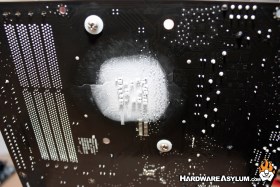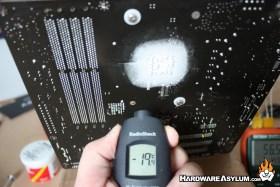How to Insulate for Single Stage Phase Cooling
Author: Dennis GarciaIntroduction
There are two basic styles of overclocking and we distinguish them based on cooling method either being ambient and below ambient. Ambient cooling is what the majority of hardware enthusiasts do on a regular basis and consists of using either a high capacity air cooler or elaborate watercoling setups to cool system components. Of course there is a limit to what ambient cooling can do but affords the user 24/7 overclocks with only a minimum of expense.
Below ambient cooling is any method that can drop your system temperature below room temperature and keep it there. You can get a lot from this style of cooling but is often not practical 24/7 usage due to cost and maintenance.
The focus of this article will be on how to install a Single Stage Phase cooler from start to finish. Single Stage Phase coolers (SS or Phase for short) are a mechanical cooling system that uses compression and rapid expansion to remove heat from system components. Out of the available below ambient cooling methods phase cooling is one of the few that can be used on a 24/7 basis because it uses the same technology found in refrigerators and freezers. The only major drawbacks are, size, weight, noise, cost and availability. Because of this most phase coolers are only used for bench style cooling like the one I'll be showing you here.



